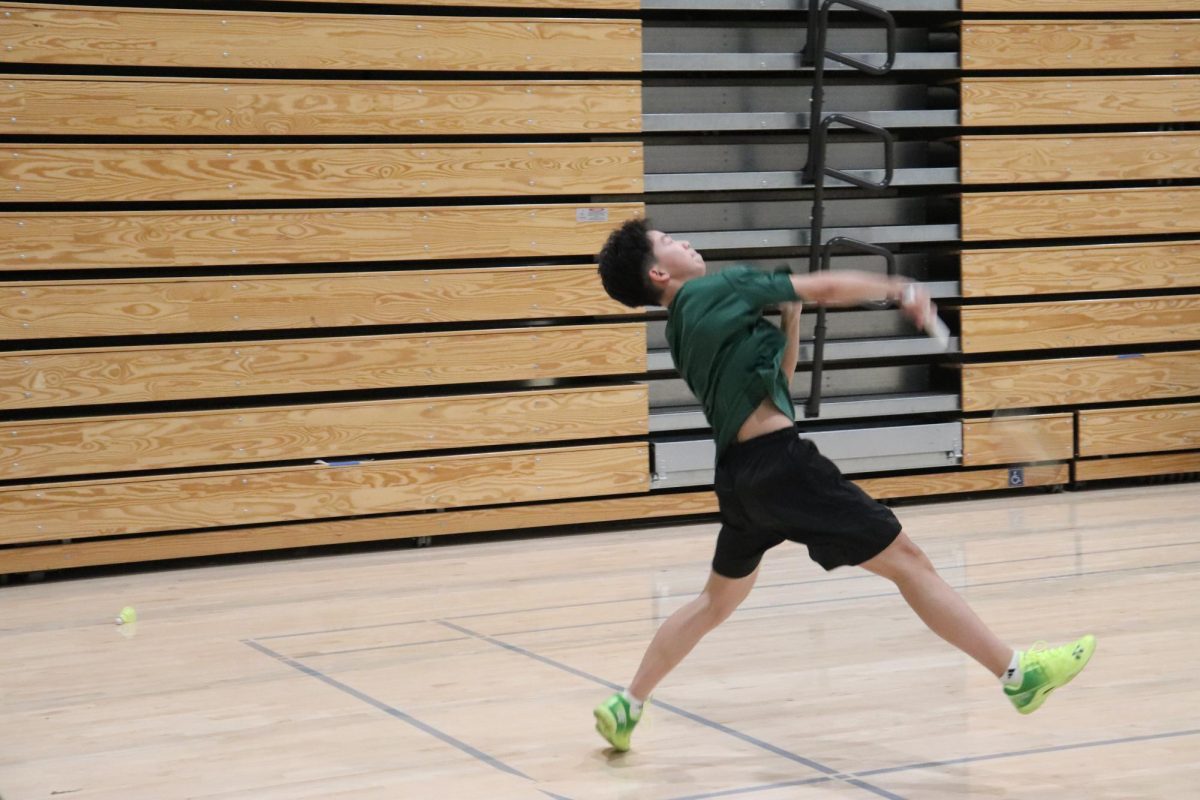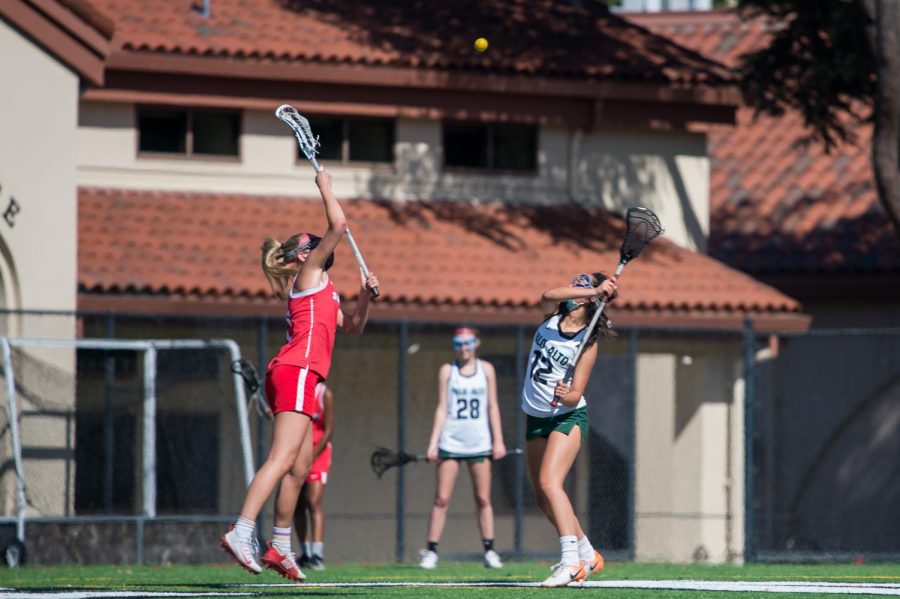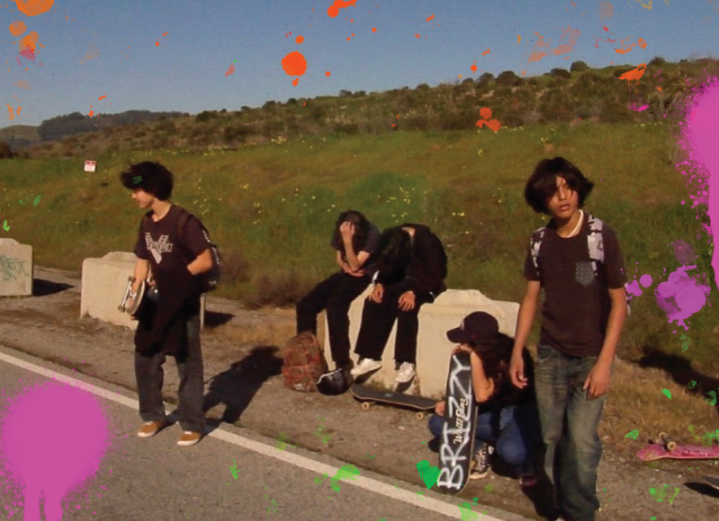Skateboarding is a sport enjoyed by many Paly students. It’s more than just a sport though; with a strong community, unique fashion, and youthful vibe skating attracts a variety of people that don’t aren’t enticed by mainstream sports. The creativity and individuality are certainly attractive.
Unfortunately for skateboarders, the sport has the perception of being an activity for delinquents and troublemakers. In high school movies, skateboarders are often unfairly painted as drug users, bad students, and soon-to-be dropouts.
In addition, graffiti that often covers skate parks, as well as the dark baggy clothes usually associated with skateboarders, creates a negative image for bystanders. Graffiti is considered vandalism, and the baggy clothes give the perception that the sport is stuck in the ‘90s. Junior Keshav Srinivasan touches on where he sees these prejudices take form.
“Because of the baggy pants, like when [I’m] sagging a little bit, people will look at [me] differently, especially old people,” Srinivasan said. “People will be really mad when we’re just there, and I think that comes from the stigma around skateboarding.”
Skateboarding is a public sport, done both in and outside parks. Aside from skate parks, skateboarders will also go out and find special spots to practice certain tricks, such as specific rails or edges that aren’t available at the park. However, sometimes these spots can be very close to businesses or other private properties, which causes conflict between the skaters and the owners.
“[In front of stores] they have [handrails], so we’ll go out there and skate the rail,” Srinivasan said. “It’s not the best thing to do, but it’s not really hurting anyone.”
Skating in places that aren’t designated skate parks will enrage people though.
“Sometimes the people that will kick you out can just be [rude]. [They’ll threaten] to call the cops and be super annoyed. They’ll be coming up and yelling when the easier approach is to just say ‘I’m sorry but you guys can’t be here.’”
These unpleasant situations do happen from time to time, and certainly don’t portray the sport in the best light. However, this is just a small downside, and skateboarders like Srinivasan want to show the positive and exciting side of skateboarding that is often not seen by the public.
“I love the process of learning new tricks. I love the feeling you get when you land a new trick you’ve been battling for a long time. I love pushing yourself fear-wise. If you’re really scared and you go for it, it feels great,” Srinivasan said. I love pushing [myself] fear wise. If you’re really scared and you go for it, it feels great. — Keshav Srinivasan
Junior Christian Saleh discussed the impact that the skate community has had on him, and the connections he’s made socially.
“I love how many friends and new people you meet through skateboarding,” Saleh said. “Just going around to different skate parks you meet a lot of new people.”
More experienced riders in the skate community also help make new skaters feel comfortable and welcome.
“Everyone is really supportive of each other. Whether you’re trying a new trick or doing anything really, people are very friendly,” Saleh said.
Another big upside is that skateboarding is an individual sport, and so skateboarders can constantly be outside and active without needing others around. Even though the community is such an important part of skateboarding, at the end of the day all a skateboarder needs is their board. Gunn junior Shina Eron explained how the individual aspect of skateboarding attracted her.
“Skateboarding is an outlet for me,” Eron said. “It’s a personal sport because you are in charge of what you want to do. You can go to parks around the bay, you can skate on any flat surface, and you can even build your own park.”
Eron also mentions her experience as a girl in such a male-dominated sport.
“It’s intimidating at first, but I found a community with other girls who [also skateboarded],” Eron said. “We have a special bond and go out of our way to skate with one another.”
Through this bonded community, it is also inevitable that a strong passion is built for skateboarding. For Menlo-Atherton senior James Polly, skateboarding quickly turned from just one small aspect of his life to an outlet for him to express himself creatively. Through film, one such creative aspect, Polly has found a new spark in life.
“When me and my friends were skating, we wanted to film our tricks in the best way possible,” Polly said. “I began to film whole days; our trips to the park [as well as] the community that revolved around the park.”
For Polly, filming became an obsession beyond just documenting his tricks. He was acquiring hours of footage from his filming and wanted to compile them into a big film that represented him and his friends. He wanted to showcase their journey of skateboarding as well as document the joys and mystique of adolescents.
“We had a big premiere in a huge bowl in Menlo Park. Hundreds of people came to watch,” Polly said. “It was one of the most rewarding and joyful experiences in my life.”
After his premiere, Polly went back to his regular filming routine. What he didn’t know though is that his “hobby” was about to open up a whole new range of opportunities.
“We began working on a second film when I was introduced to a short film competition at my school,” Polly said. “I never thought that the filming I was doing for skateboarding would actually transfer into another part of my life, I was just doing it for fun originally.”
He began working for hours on hours, perfecting his work and ultimately finishing his film for the competition.
“We had gone on such a journey throughout the filming process, I ended up learning so much about myself and my creative preferences,” Polly said.
When Polly finished his film he ended up winning first prize for cinematography in the short film contest.
“When I got first place, it was so validating, I thought to myself ‘like oh wow, this is real’ which inspired me to continue working on my film,” Polly said. Through skateboarding, I have been introduced to an immense field of creative outlets that have inspired my future career. — James Polly
Polly built up his portfolio over the next few months, applying for the New York Times cinematography program.
“I kind of just applied, getting in was what was truly shocking to me,” Polly said.
When Polly got to New York, he was exposed to a whole new approach to film making. As well as a whole new community that shared his passion for cinematography.
“It was definitely a learning experience to understand and fuse so many different techniques into my filming that I had never thought of before. I was stubborn at first for sure, but ultimately realized that the new techniques gave me new ways to share ideas.” Polly said.
After Polly finished his summer program his portfolio was extensive, just in time for college applications. Polly ended up applying to New York University in Manhattan, pursuing a film degree. He was accepted and will be a freshman this coming fall.
“My filming journey was definitely unusual compared to most of my filming peers, but I think that getting here through skateboarding has been really important in shaping the way I create my art,” Polly said.
A major step in breaking down the stigma around skateboarding is the sport’s advancement on the world stage. With skateboarding’s recent addition to the Olympics, it is now recognized as the most prestigious sporting competition in the world.
The process of getting that recognition was not easy however, as the sport is considered a high injury risk (a liability the Olympic committee doesn’t usually want to take), and there is a large pushback from skaters with traditional skateboarding values (skating has always been viewed as a niche sport, and many didn’t want that to change). However, support from the professional skateboarding community as well as an increase in the sport’s popularity helped overcome these challenges.
In 2015, skateboarding was added to a shortlist along with five other sports to possibly be introduced in the 2020 Summer Olympics. A year later, skateboarding was approved to make its Olympic debut in the 2020 games.
“Parents won’t be able to say anymore that their kids are wasting their future by skateboarding,” Hiremath said. “Now skateboarding is on the same level as universally recognized sports like swimming or track and field.”
At the moment skateboarding is relatively new to the international stage, but over the coming years, it should continue to develop into a full-blown professional sport. According to SkyQuest, the global skateboarding market is projected to grow from USD 2.83 billion in 2022 to USD 4.16 billion by 2030.
“A lot of people feel that skateboarding can’t become a real career,” Hiremath said. “But I think we’ll start to see skateboarders making money through brand deals and other methods, and then skateboarding could turn into something that kids can dream to do for their whole lives.”
Although the battle against the stigma around skateboarding is certainly not over, skateboarding has come a long way. People are starting to see that the sport is more than just “bums” with nothing better to do, and instead, as a way to show creativity, style, and fearlessness in both recreational and competitive settings. Perhaps most importantly, the skateboarding community is a unique one, where skateboarders can form lifelong friendships with people from all ages and backgrounds.
“Skateboarding has become one of the most important parts of my life, and I wouldn’t have it any other way,” Srinivasan said. “It’s impacted me in so many different ways, and I wouldn’t be the same without it.”










